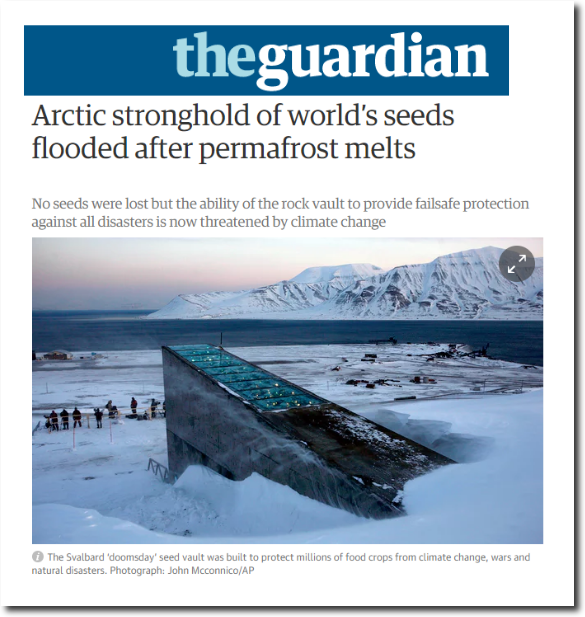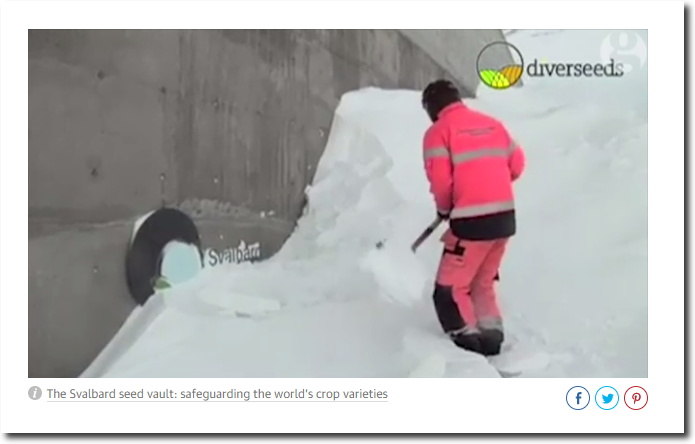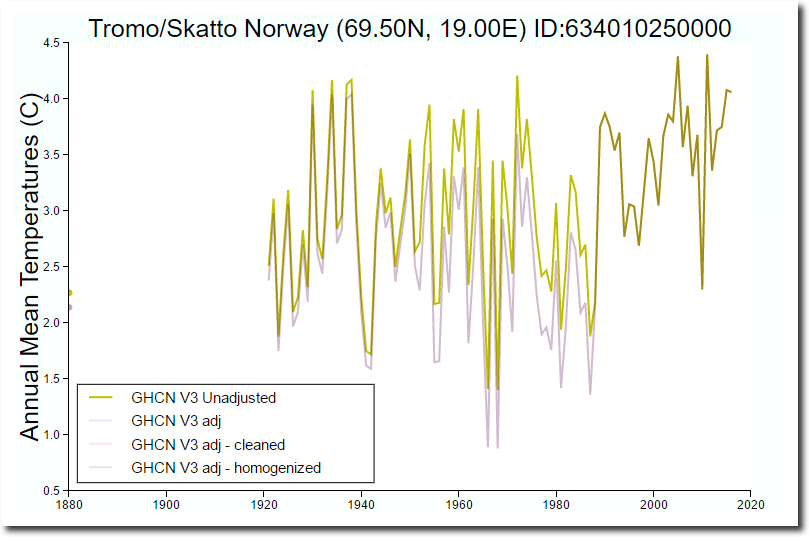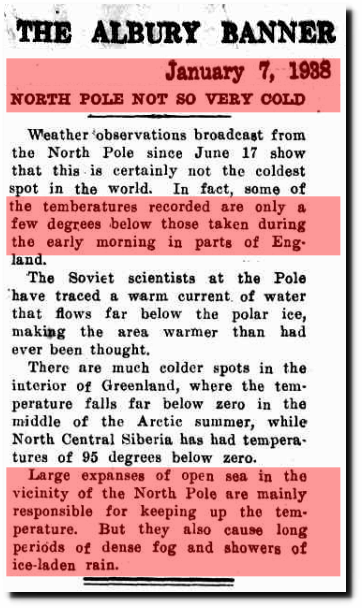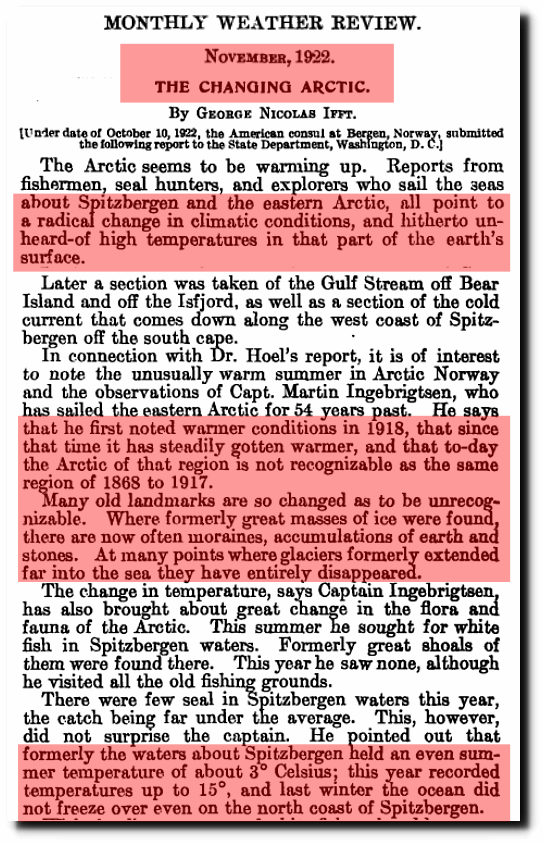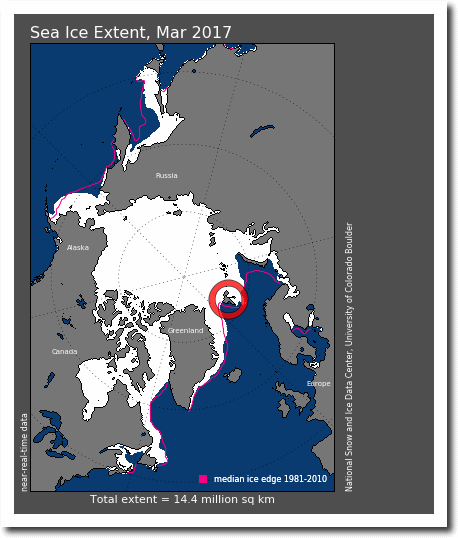The Guardian believes that the world’s food supply is doomed, because of one day last November when it rained in Svalbard. And they provided these pictures as evidence of melting.
It was designed as an impregnable deep-freeze to protect the world’s most precious seeds from any global disaster and ensure humanity’s food supply forever. But the Global Seed Vault, buried in a mountain deep inside the Arctic circle, has been breached after global warming produced extraordinary temperatures over the winter, sending meltwater gushing into the entrance tunnel.
The vault is on the Norwegian island of Spitsbergen and contains almost a million packets of seeds, each a variety of an important food crop. When it was opened in 2008, the deep permafrost through which the vault was sunk was expected to provide “failsafe” protection against “the challenge of natural or man-made disasters”.
Weather at one location on one day is climate!
But soaring temperatures in the Arctic at the end of the world’s hottest ever recorded year led to melting and heavy rain, when light snow should have been falling. “It was not in our plans to think that the permafrost would not be there and that it would experience extreme weather like that,” said Hege Njaa Aschim, from the Norwegian government, which owns the vault.
Never mind that there wasn’t any actual damage.
“A lot of water went into the start of the tunnel and then it froze to ice, so it was like a glacier when you went in,” she told the Guardian. Fortunately, the meltwater did not reach the vault itself, the ice has been hacked out, and the precious seeds remain safe for now at the required storage temperature of -18C.
They say that Svalbard is warming super fast.
“The Arctic and especially Svalbard warms up faster than the rest of the world. The climate is changing dramatically and we are all amazed at how quickly it is going,” Isaksen told Norwegian newspaper Dagbladet.
‘Extraordinarily hot’ Arctic temperatures alarm scientists | Environment | The Guardian
NASA does show that Svalbard is warming rapidly over the past 40 years. Obviously it must be due to CO2. What else could possibly be causing it?
Data.GISS: GISS Surface Temperature Analysis
We could make blind assumptions blaming CO2 like climate scientists do, or we could behave like real scientists and do some actual investigation. The closest station to Svalbard with long term records shows that regional temperatures are cyclical, and that it was just as warm in the 1930’s when CO2 levels were below 310 PPM.
Data.GISS: GISS Surface Temperature Analysis
In 1938, the North Pole was almost as warm as England, and they had long periods of rain.
07 Jan 1938 – NORTH POLE NOT SO VERY COLD
In 1922, the Arctic was experiencing a radical change in climate conditions and Svalbard’s seas were ice-free all winter.
This year, there was lots of ice around Svalbard.
N_201703_extn_v2.1.png (420×500)
No one was stupid enough in 1938 to think that rain the Arctic threatened the world’s food supply, or that one day of rain is climate. Fast forward to 2017, and we are dealing with the world’s stupidest people in control of policy.

